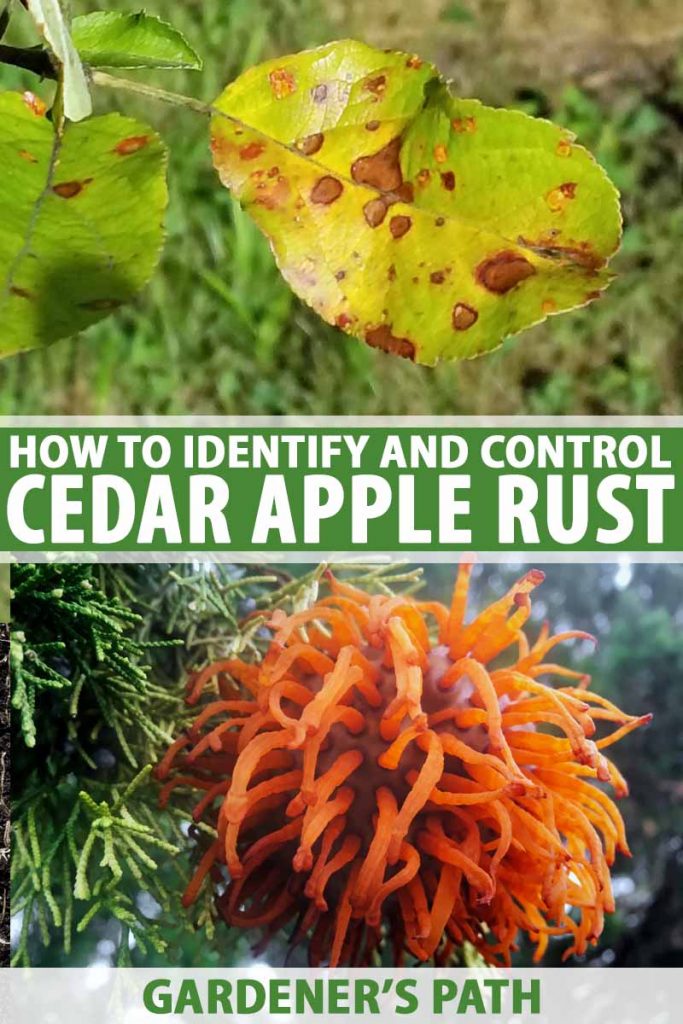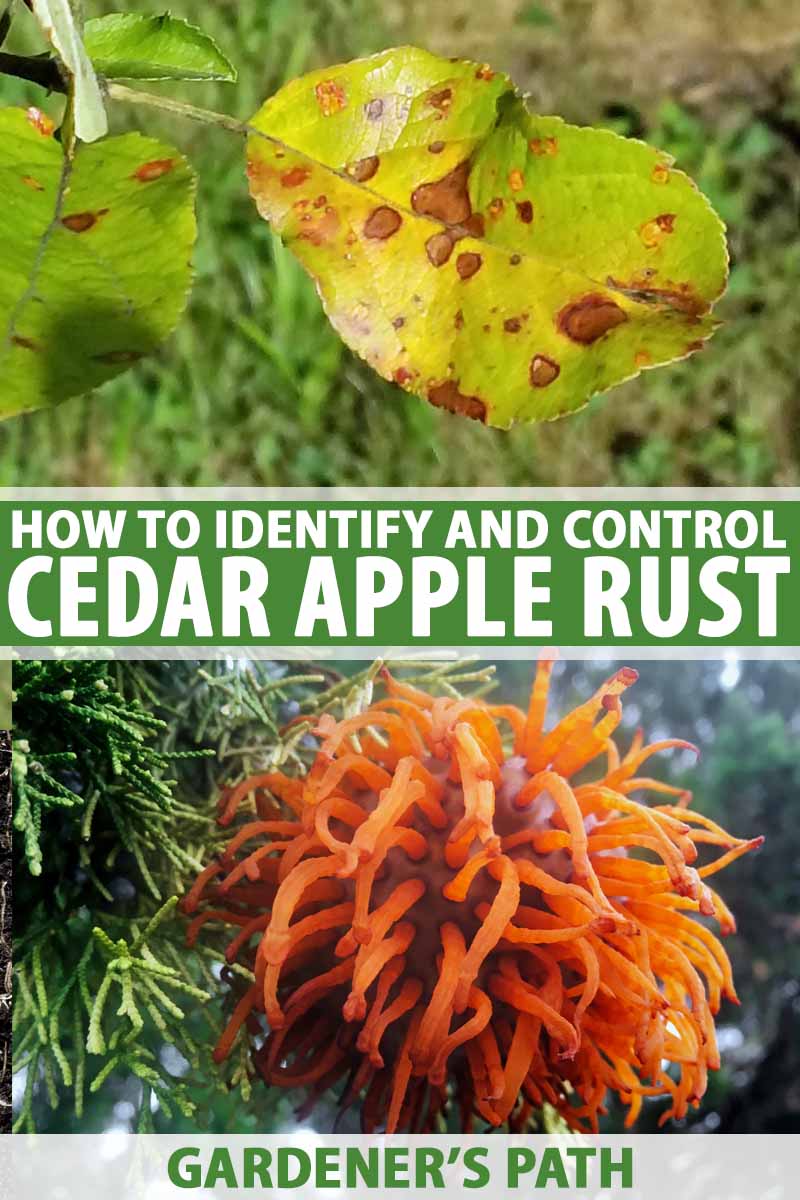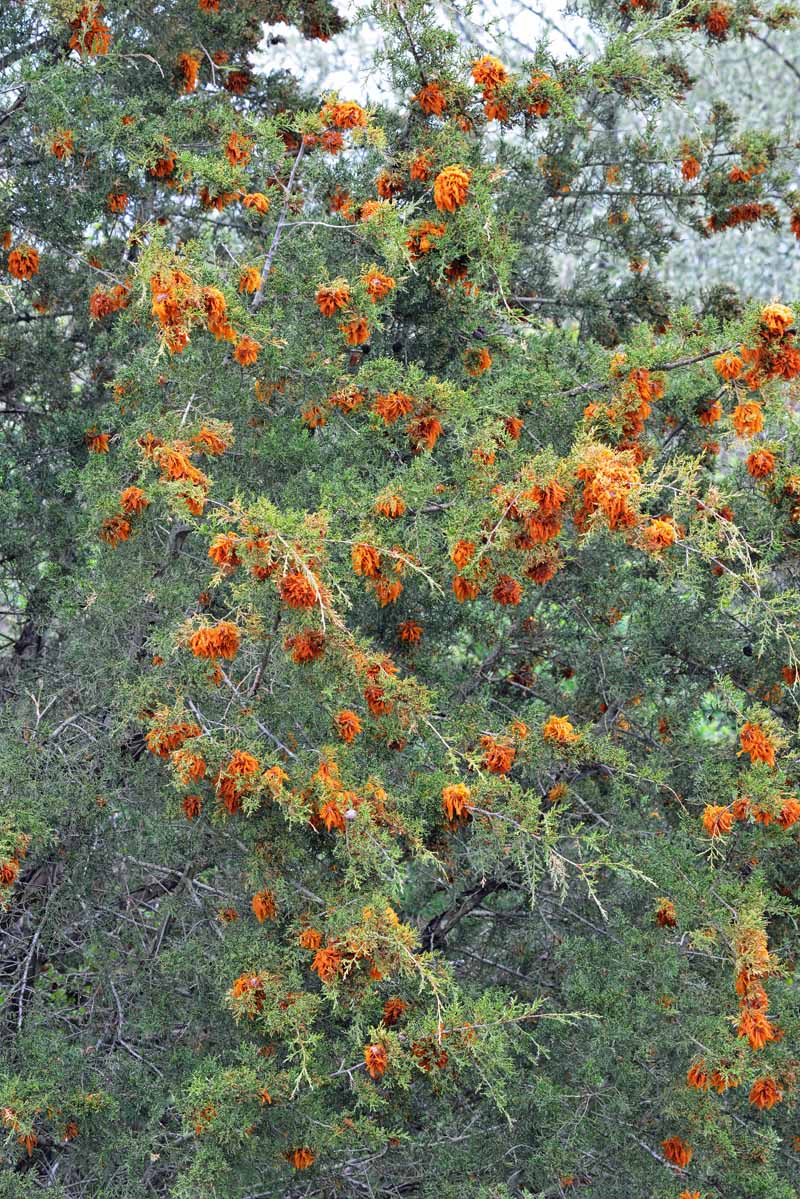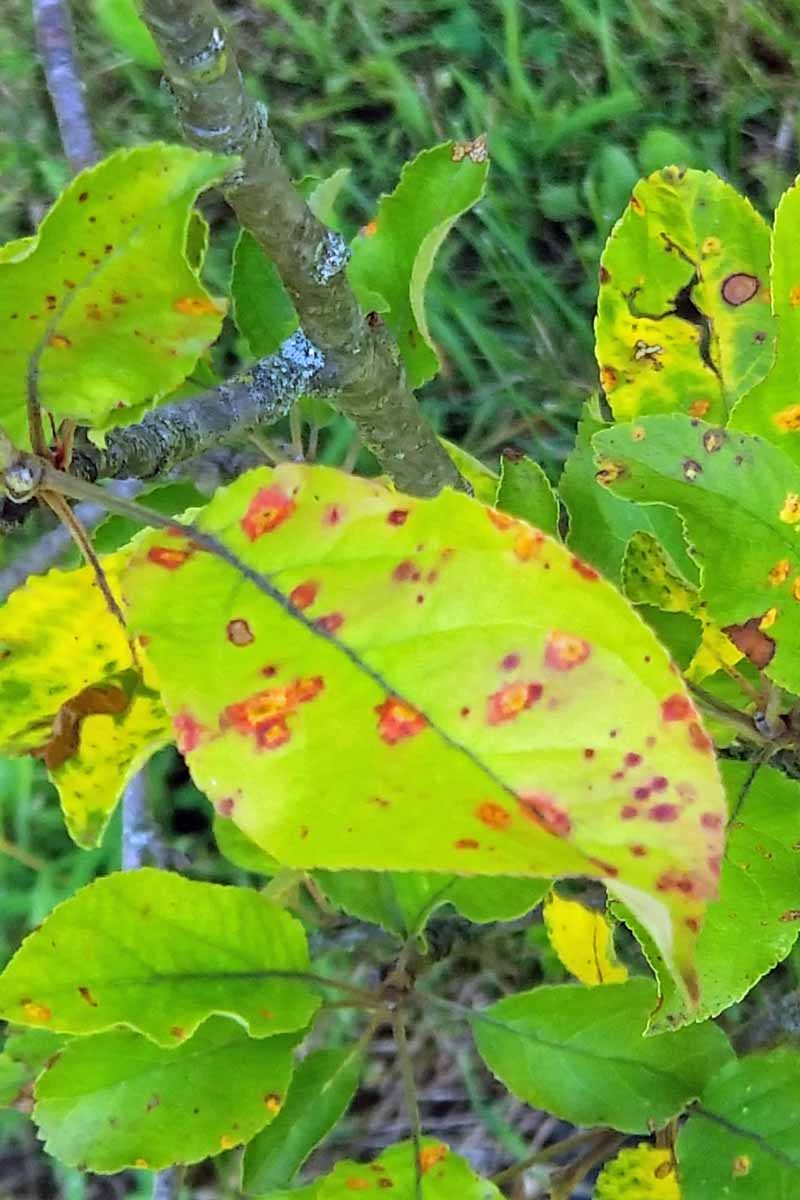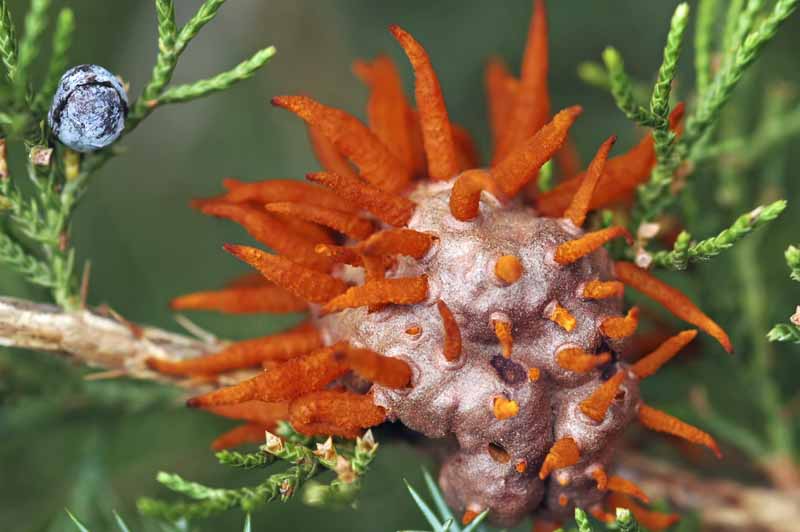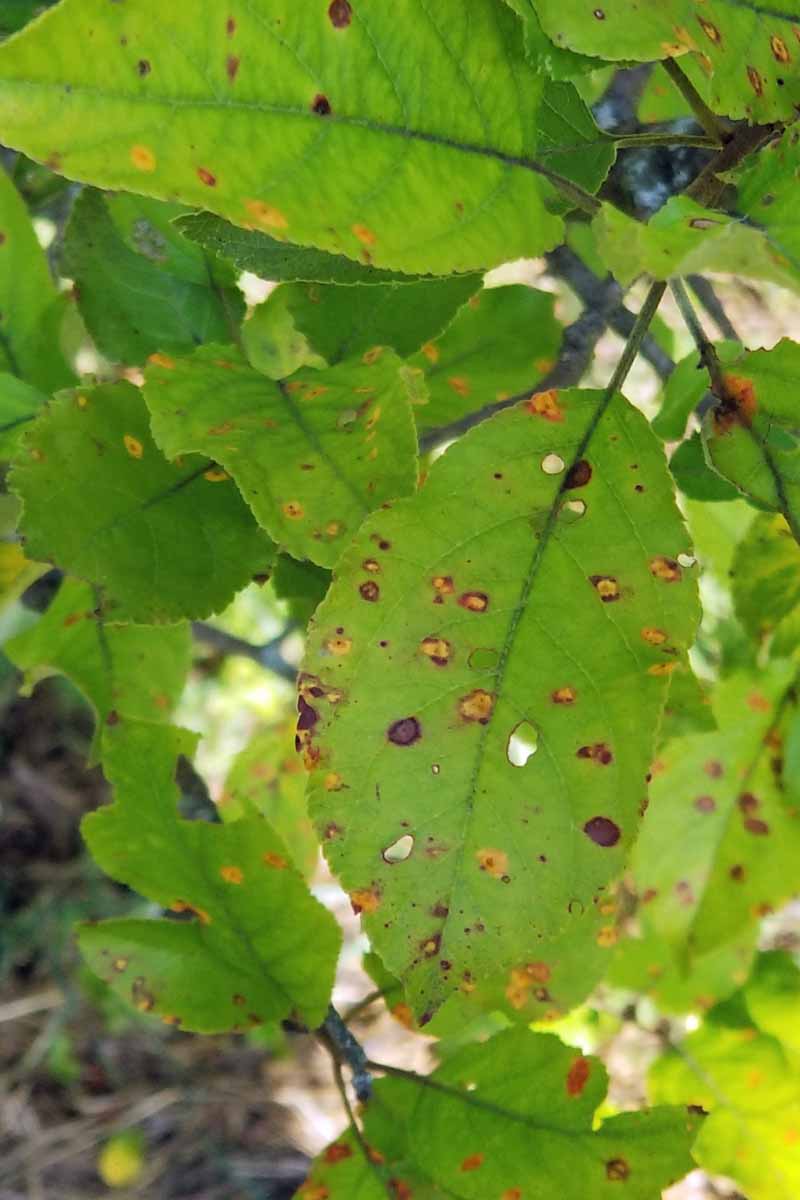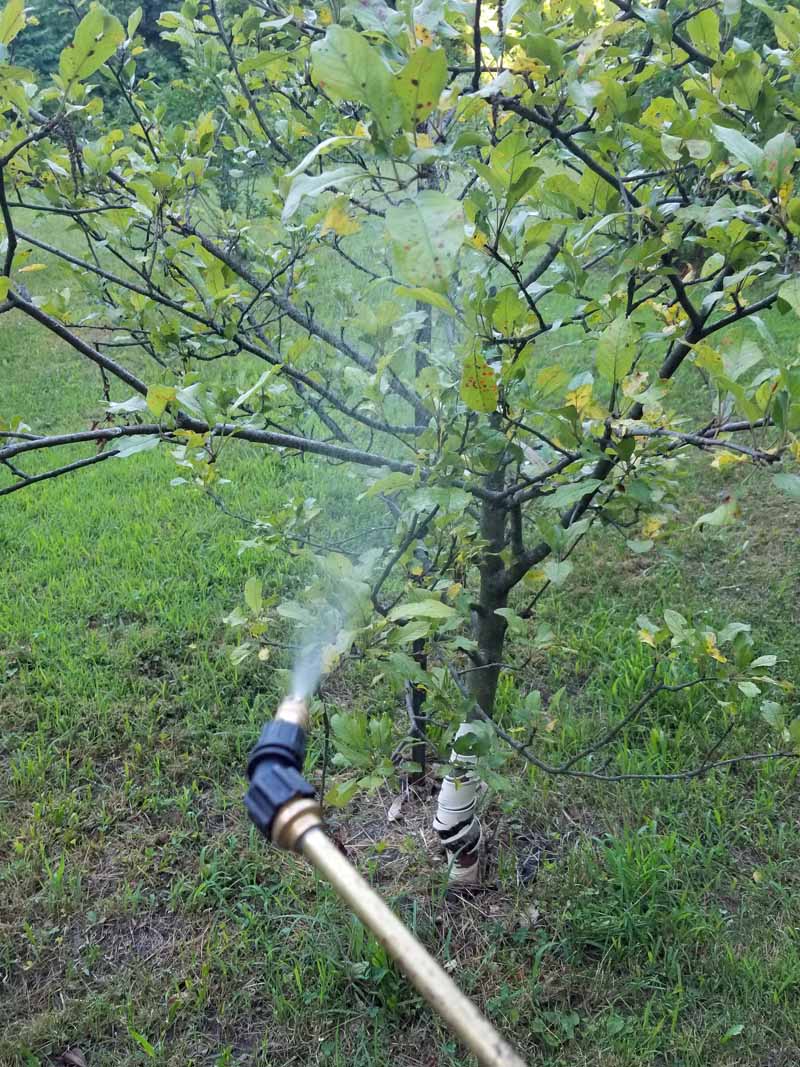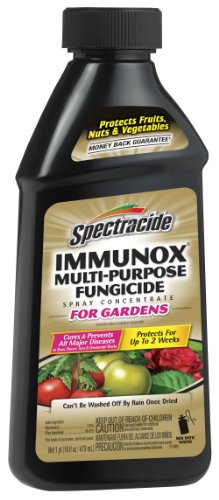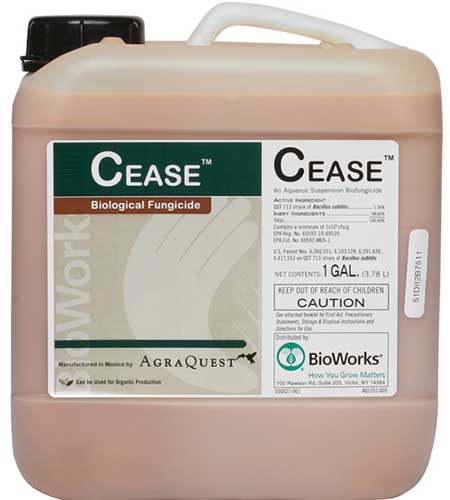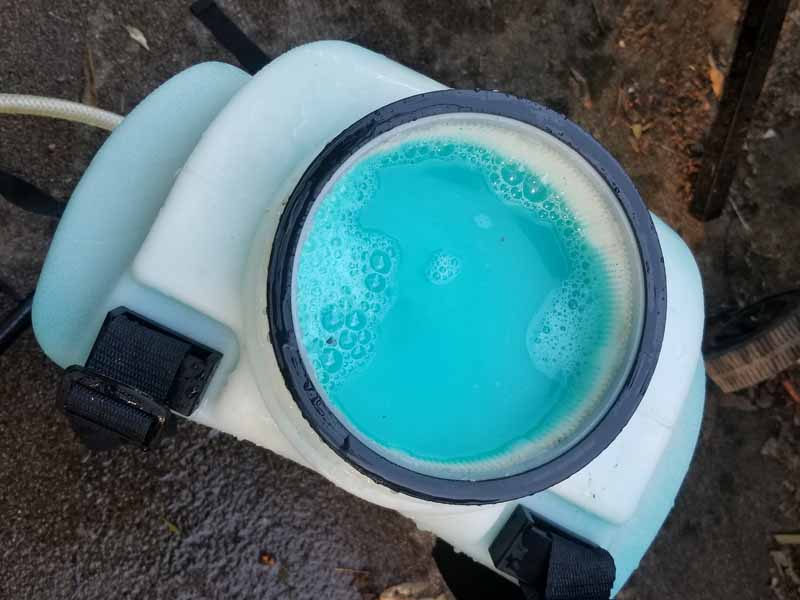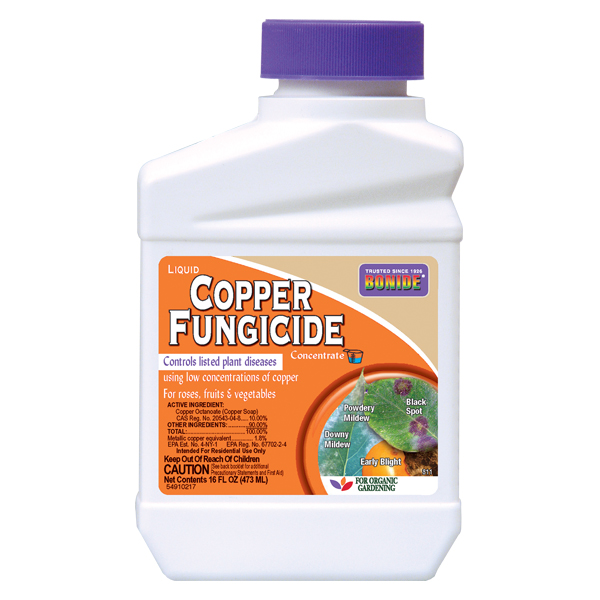Think Gloria Gaynor – your plants will survive! However, repeated infections of this pathogen can seriously weaken and destroy the health of susceptible plants. They will also lose any ornamental value. We link to vendors to help you find relevant products. If you buy from one of our links, we may earn a commission.
What Is Cedar Apple Rust?
Cedar apple rust (Gymnosporangium juniperi-virginianae) is a fungal disease that depends on two species to spread and develop. It spends a portion of its two-year life cycle on Eastern red cedar (Juniperus virginiana). The pathogen’s spores develop in late fall on the juniper as a reddish brown gall on young branches of the trees. As the spring showers begin, the galls grow and release spores, which are carried by the wind to infect apple and crabapple trees. There, they develop into a disease that causes red spots to occur on the leaves, and that can deform the fruit. The damage done to the leaves greatly affects the apple trees’ ability to gather sunlight and nutrients from the air, damaging its health and fruit production, and in some cases causing death. The fungus cannot be transferred from apple tree to apple tree, or from juniper to juniper. The following year, spores are released from the apple trees that, in turn, infect the junipers. The disease is extremely prolific during wet years. Note that this is a simplified explanation. Gymnosporangium juniperi-virginianae actually produces FIVE different kinds of spores.
Symptoms on Juniper
This fungal pathogen starts life on junipers as an aeciospore that the wind carries from apples to its new host in the late spring or early fall. A brown gall develops the following summer and fall. Both are are conifers and belong to the taxonomic Pinales order. But the American natives belong to the the cypress family (Cupressaceae) while the true varieties are of the pine family (Pinaceae). True cedars have fan-like foliage and produce small cones or pink flowers, while junipers have rough textured bark similar to that of many hardwoods, and they usually have scale-like leaves and reddish stringy bark.
During the spring rains 18 months later comes a metamorphosis that rivals that of Kafka’s. Instead of turning into a cockroach, the galls swell and grow spurs called telial horns that are brown at first, but turn bright orange in the rain. Apple cedar rust is straight out of the disco era with its large galls and radically orange telial horns that protrude in all directions. To make them even more outrageous, the telia are gelatinous. If conditions are right, these telial horns produce another type of spore that produces yet another kind of spore, which is blown back to infect apple leaves and fruit. As few as 4-5 hours of rain at 50-75°F is time enough to produce a severe infection on apples.
Symptoms on Apples and Crabapples
Instead of galls, infected apple and crabapple trees manifest circular yellow spots on the upper surface of their leaves soon after bloom. Later in the summer, brownish cylindrical tubes with hairs sticking out appear underneath the yellow spots, or on the twigs and fruit. These tubes produce the aeciospores that will complete the cycle by infecting the needles of junipers. At the least, the infected fruit may be of marginal quality. Worst case scenario – they drop off the tree. In addition, a severe infection can cause your tree to drop its leaves! If that happens for several years in a row, your apple tree could be in peril.
How to Control Cedar Apple Rust
The best way to control cedar apple rust is to prevent infection using a mixture of cultural methods and chemical treatments. If you see the lesions on the apple leaves or fruit, it is too late to control the fungus. In that case, you should focus on purging infected leaves and fruit from around your tree. Don’t plant junipers near rust-susceptible plants, which include both apples and crabapples. Consider resistant apple varieties, such as ‘Freedom,’ ‘Liberty,’ ‘Redfree,’ or ‘William’s Pride.’ And also destroy wild or unwanted apples, crabapples, or junipers, so they won’t infect your apple tree.
Cultural Controls
Since the juniper galls are the source of the spores that infect the apple trees, cutting them is a sound strategy if there aren’t too many of them. While the spores can travel for miles, most of the ones that could infect your tree are within a few hundred feet. The best way to do this is to prune the branches about 4-6 inches below the galls. You will want to disinfect your pruning shears, so you don’t spread the infection. Dip them in 10% bleach or alcohol for at least 30 seconds between cuts.
Fungicide Treatments
If your tree has a history of infection with cedar apple rust, you will want to get ahead of the infection and take preemptive measures. This is critical in the spring, when the juniper galls are releasing their spores. The time to treat your tree is between the pink stage of the blossoms (when the leaves are turning green) to the period when the petals drop. The most effective types of fungicides to use are those that inhibit fungal sterols. They are known as “SI,” or sterol inhibitors. In the old days, sprays for apple scab would also take care of cedar apple rust. However, this is no longer the case. The fungus that causes apple scab is now frequently resistant to the sterol-inhibiting fungicides, and manufacturers have moved on to using newer classes of fungicides. Only certain types of fungicides are effective. Extension agents at North Carolina State University attribute this trend to an increase in occurrences on apple trees in the state. Unfortunately, captan, the fungicide in many pre-mixed sprays for home fruit trees, does not work on on this particular fungal pathogen.
Should You Treat Junipers?
Although the galls don’t do much damage to junipers, treating them with fungicide can help prevent their spores from spreading. This can also help to reduce the amount of cedar apple rust on your tree. Make sure you choose a formulation that is labeled for use on fruit trees such as the one shown above, since several types available today are not designed for this purpose. Typically, you should spray every 7-10 days during the period of infection. After that, you no longer need to treat your tree for the rest of the year.
Organic Controls
You have several options if you want to avoid using traditional fungicides on your apple tree.
Biofungicides
There is a strain of bacteria that is effective at treating cedar apple rust on apple trees. It is a special strain of Bacillus subtilis, sold commercially as CEASE Biological Fungicide, available at Arbico Organics.
CEASE Biological Fungicide (Bacillus subtilis) via ARBICO Organics One plus of this treatment is that it is nontoxic to beneficial insects and honeybees.
A Mixture of Sulfur and Pyrethins
These two classic compounds are available in a pre-mixed spray known as Bonide® Orchard Spray. This spray controls both fungi and insects and is certified organic. Beware that it can harm beneficial insects in the area along with pests.
BONIDE® Citrus, Fruit & Nut Orchard Spray via ARBICO Organics Be sure to spray all parts of your tree – especially the new leaves.
Liquid Copper
You can treat them with a solution of copper at least four times. Use 0.5 to 2.0 ounces of copper per gallon of water. It’s best to start with this treatment as a preventative early in the spring before the trees are showing signs of infection, or just as they begin showing symptoms.
BONIDE® Liquid Copper Fungicide Copper is not a cure-all, but it can help greatly in preventing damage to the leaves and fruit. You can find this product in most farm and home stores (such as Tractor Supply) or you can purchase it through ARBICO Organics. The time to treat the junipers is before the galls produce their teliohorns, or when they are producing the aeciospores. You can treat them with a liquid copper product like you would with apple trees. Unfortunately, you need to treat them repeatedly from mid-summer until fall, which can be expensive.
Other Fungal Rusts
Additional rusts plague apples and crabapples in addition to other types of fruit. These other fungal diseases have life cycles similar to that of cedar apple rust, but their telial phases are less dramatic. Cedar-hawthorn rust (Gymnosporangium globosum) affects pear, serviceberry, and quince. Additional alternate hosts include Rocky Mountain juniper, common juniper, and prostrate juniper. Its telial phase is short and stubby, and its spots on apple or crabapple leaves are initially yellow and then turn orange. Cedar-quince rust (G. clavipes) affects many plants in the rose family. Additional alternate hosts include common juniper, prostrate juniper, Rocky Mountain juniper, and savin juniper. In this case, the galls are much less noticeable – basically swellings on the juniper twigs. The telial phase looks like oozing orange scum. And unlike the other rusts, the cedar-quince fungus typically infects thorns, new twigs, and fruits on its fruit host. These infections are much less dramatic, too, with spots that are barely noticeable.
Try as They Might, These Fungi Cannot Hide
One of the few good things about these fungi, except that they rarely kill your plants outright, is that they are really hard to miss. You will know when you see those orange telial horns on junipers that you should work on protecting your apple or crabapple tree right away.
With these tips from Gardener’s Path, you have hope of tamping down the cedar apple rust on your apple or crabapple trees. Leave a comment if you have dealt with this nasty fungus, and let us know how it turned out for you. Have any more tips to suggest? Sharing is caring!
How to Prevent and Control Powdery Mildew on Apple Trees How to Identify and Control Sooty Blotch and Flyspeck on Apples How to Identify and Control Apple Black Rot and Frogeye Leaf Spot
Photos by Mike Quinn © Ask the Experts, LLC. ALL RIGHTS RESERVED. See our TOS for more details. Product images via Spectrum Group, Bayer, and Bonide. Uncredited photos: Shutterstock. With additional writing and editing by Mike Quinn and Allison Sidhu.
